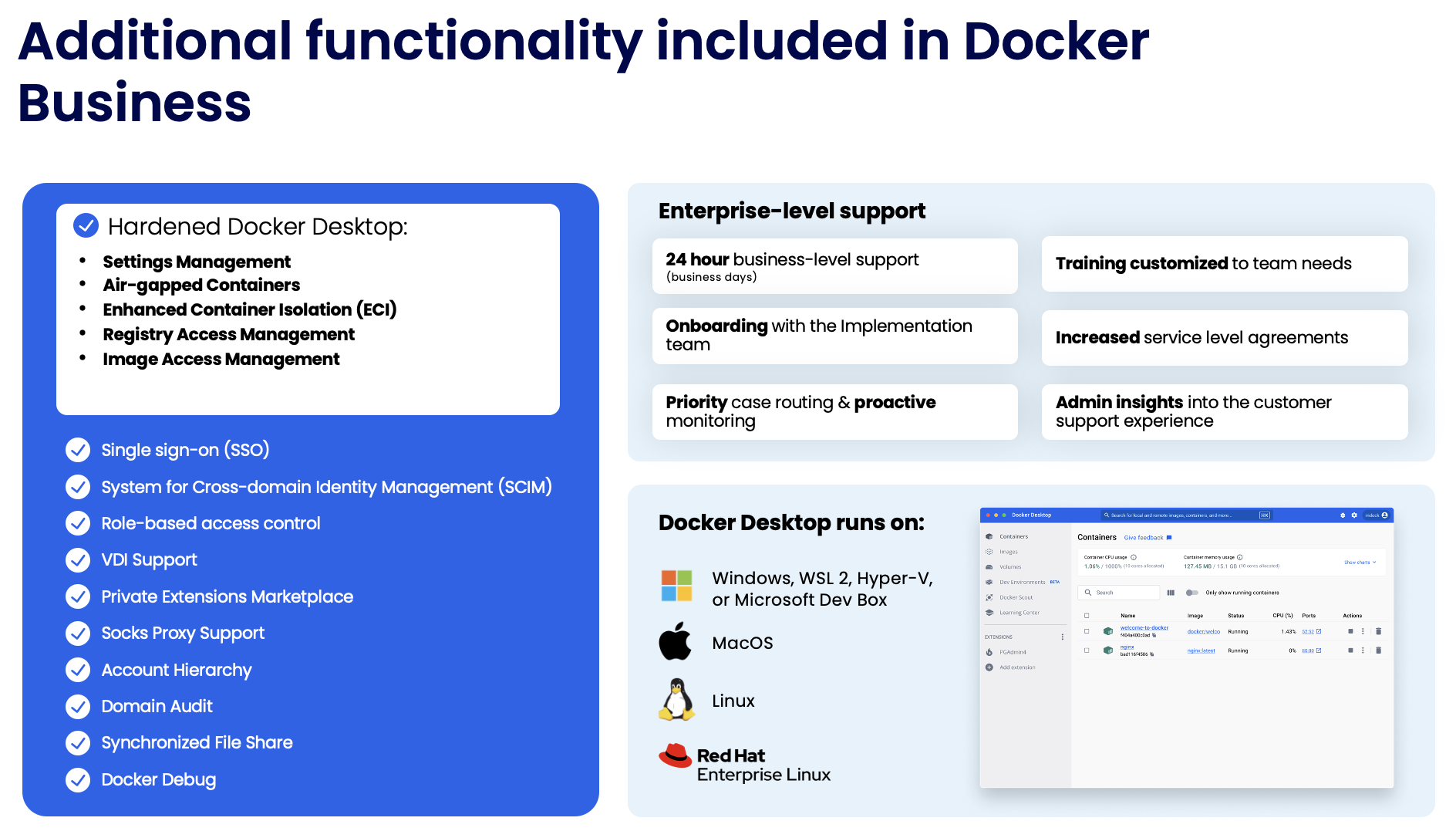Docker
Docker has undergone significant evolution to adapt to the changing demands of the industry. Our original objectives of facilitating the deployment, management, and scaling of applications for developers and IT organizations remain steadfast. However, through various iterations, we have become increasingly focused on understanding our customers’ needs, adding value, and creating features that enhance their experience.
How Docker Business Supports Customers Today
The complexity and expectations within the industry are escalating, which poses challenges to maintaining high-quality developer experiences.
Historically, the development lifecycle was straightforward, involving a small team and minimal resources. However, as the software industry expanded, this simplistic approach became insufficient. The transition to DevOps aimed to provide engineers with greater control, but it also led to a lack of standardization. Tasks such as porting code, transferring projects, migrating to the cloud, and onboarding new developers became increasingly time-consuming.
The introduction of security measures led to the emergence of DevSecOps, which sought to establish guardrails and standardize workflows. However, this often resulted in friction between developers and security teams. The growing complexity and larger team sizes underscored the critical need for standardization.
To address these challenges, the concept of “developer experience” emerged, offering choices to satisfy developers while enhancing team effectiveness. Nevertheless, larger teams and an abundance of choices resulted in minimal standardization and inadequate control. Teams continued to grapple with issues such as porting code, selecting different technology stacks, and inconsistent security measures. The software delivery process remained inefficiently managed.
This lack of standardization and control is costly. Continuous Integration (CI) processes frequently fail, code deployment to production is delayed, and vulnerabilities are often addressed only after discovery. Teams struggle to collaborate effectively, which slows down the entire development process.
Furthermore, it is estimated that by the end of 2025, development teams will need to create 750 million applications. Additionally, the economic landscape has shifted, introducing new priorities and increased consolidation.
How can we navigate these challenges efficiently while maintaining high developer experiences?
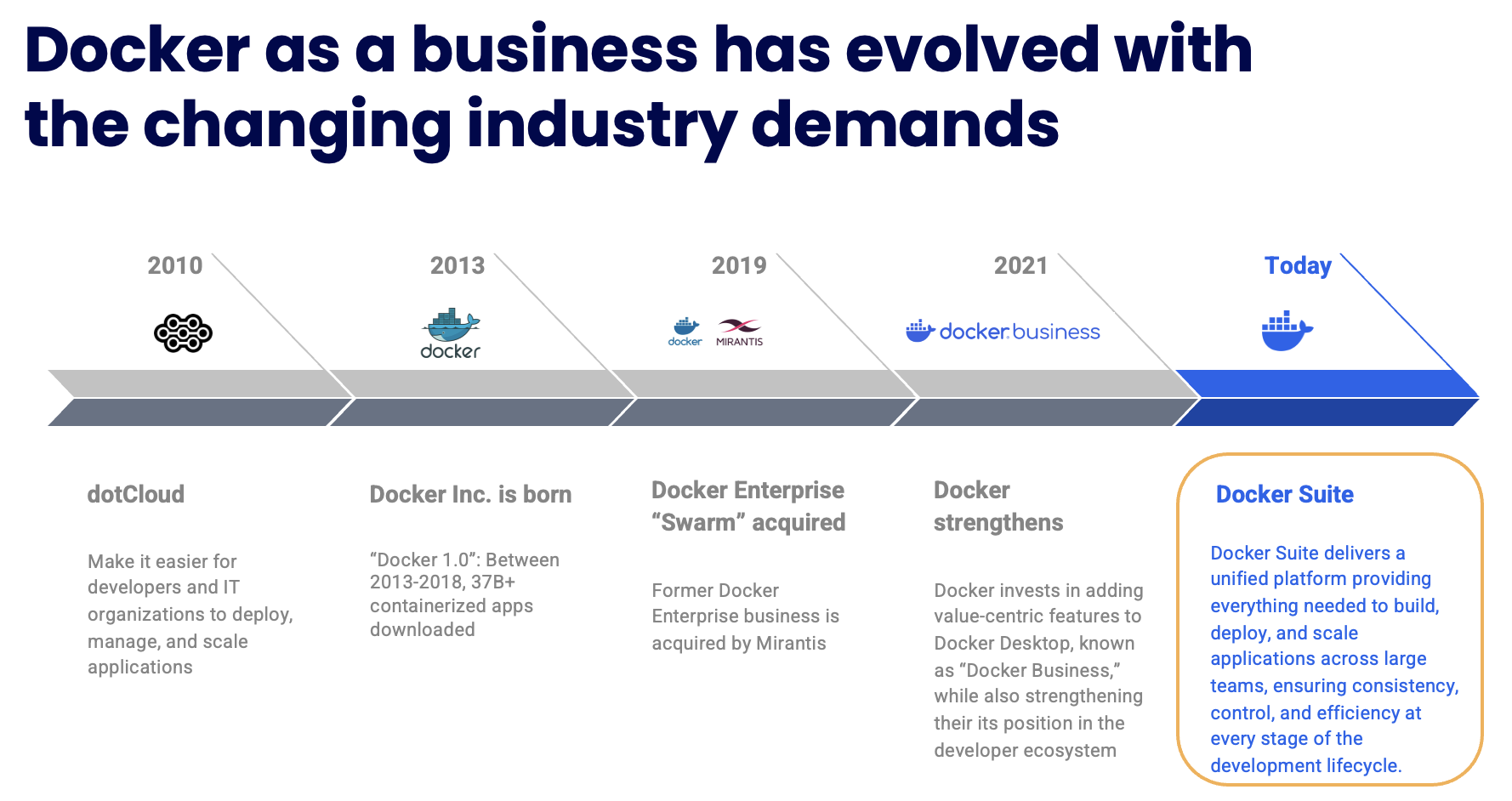
Common Use Cases for Docker
Docker is utilized for a variety of purposes. Here are a few common use cases observed among our clients:
- Legacy Application Modernization: Older applications can be containerized and rendered more portable, allowing them to operate in modern cloud environments without extensive refactoring.
- Improved Deployment Efficiency: Docker seamlessly integrates into CI/CD pipelines, enabling containers to be built, tested, and deployed in an automated manner, thereby streamlining the software delivery process.
- Enhanced Developer Experience: Developers use Docker to create consistent development environments, ensuring that applications behave consistently throughout their lifecycle. This eliminates the “it works on my machine” problem and accelerates developers’ ability to work on code, thereby increasing both developer satisfaction and productivity.
- Microservices Architectures: Docker’s containerization is well-suited for microservices, where each service—often with its own set of dependencies—runs in a separate container. This isolation is particularly beneficial in multi-tenant architectures or when running conflicting software on the same server.
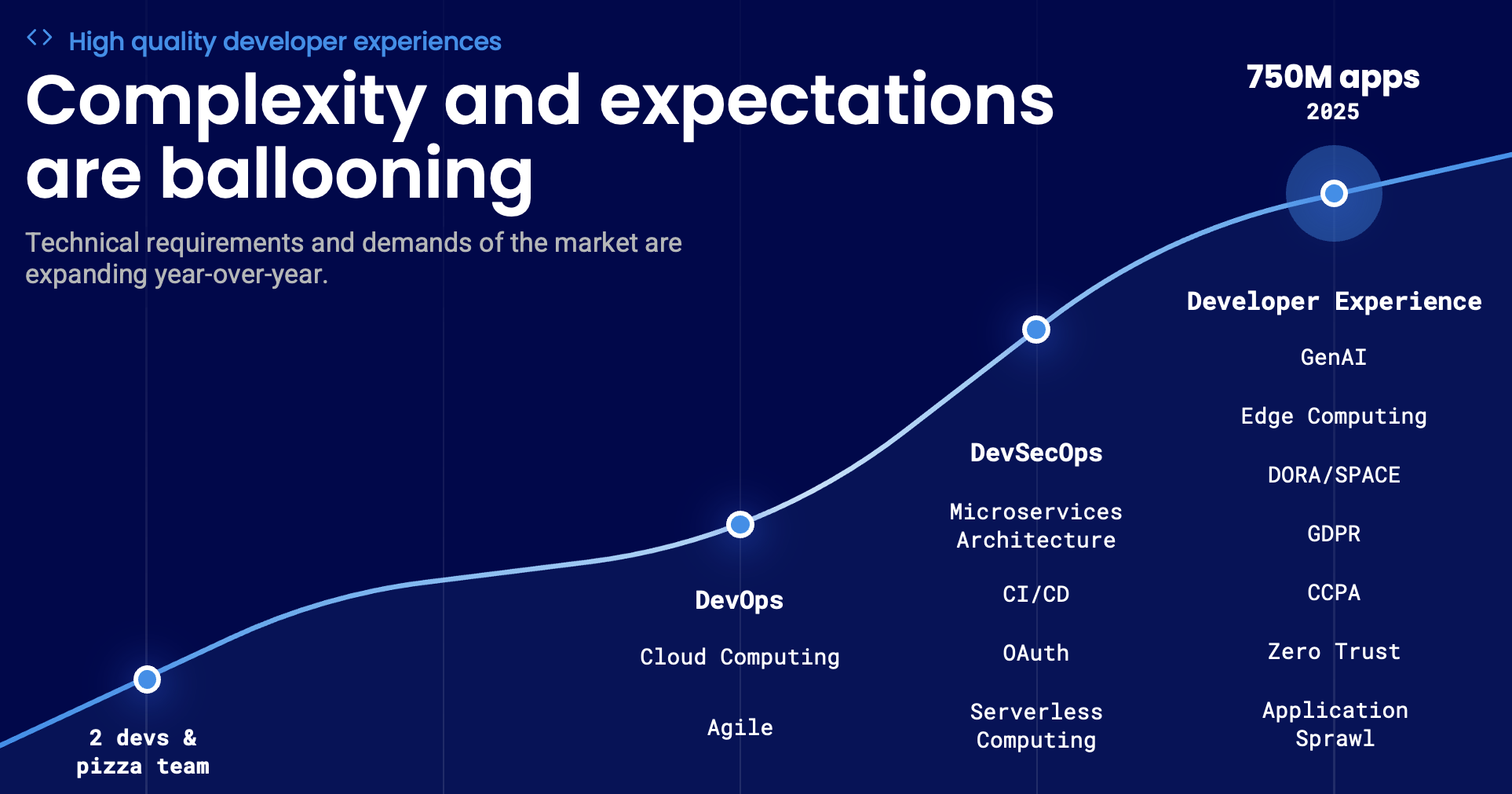
Docker Business Benefits
Docker Business offers a comprehensive suite of products and services designed to enable organizations to realize these benefits. Docker Platform is specifically tailored for medium to large enterprises, addressing their unique needs.
Organizations can achieve the following:
- Enhance team productivity and ROI by expediting modern application development
- Elevate the development landscape with robust security measures and compliance
- Streamline and drive innovation by establishing best practices with enterprise-grade tools
- Foster secure collaboration across diverse environments through role-based access controls and integrated team management
Docker Business provides customers with the flexibility to leverage the full suite of products and access additional functionality and capacity as required, thereby supporting their development teams and organizations in achieving greater success and security.

SDLC Support with Docker
The following breakdown of the Software Development Life Cycle (SDLC) into two distinct loops—the inner and outer loops of application development—illustrates how Docker’s suite of solutions supports each stage.
- Inner Loop: This loop focuses on the rapid iterative phases of development, including planning, setup, coding, building, and testing, all within a controlled environment. Tools such as Docker Desktop, Docker Hub, and Docker Scout play a crucial role by providing foundational solutions such as establishing quality images, streamlining access to projects and development environments, and offering insights into team performance.
- Outer Loop: This loop focuses on the phase where the application is prepared for integration, further testing, deployment, monitoring, and release management. Docker ensures a seamless and efficient transition from development to production. The use of Docker Hub and Docker Scout continues to provide trusted content and security insights throughout the process.
By leveraging these products across the SDLC, teams can ensure a smooth development flow from inception to deployment, enabling quick feedback loops and faster issue resolution. This holistic approach not only accelerates the development cycle but also enhances the overall quality and reliability of the software, ultimately driving better business outcomes.
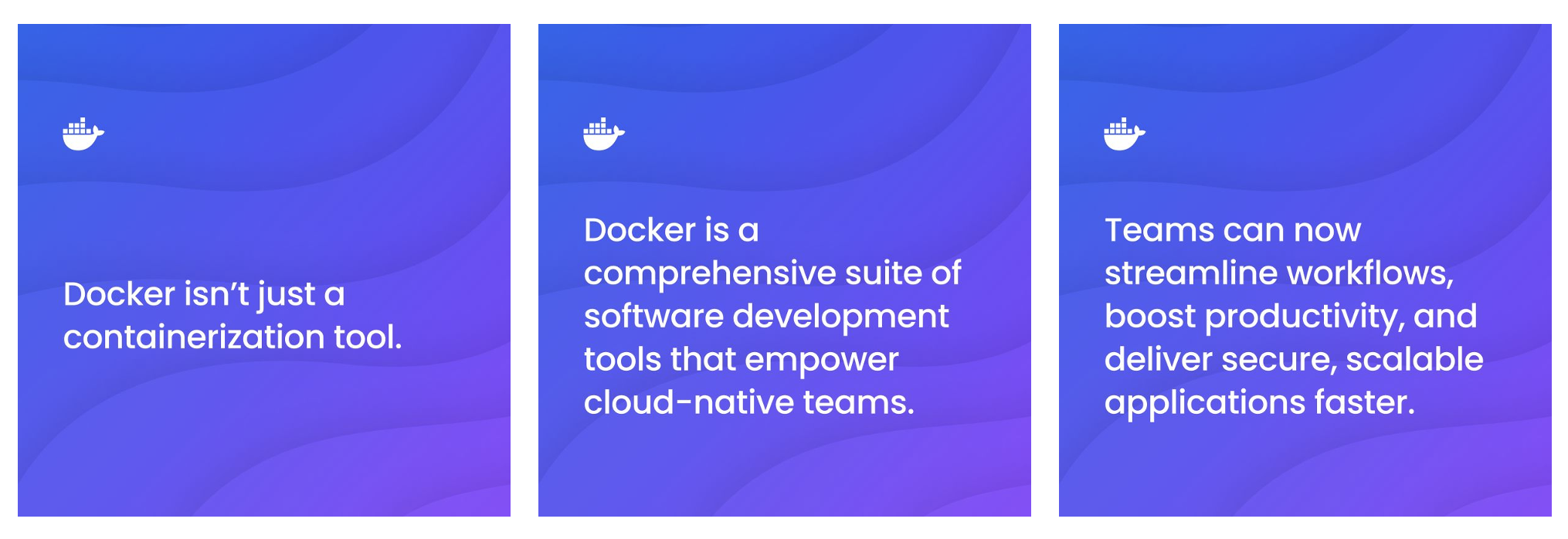
Use Cases
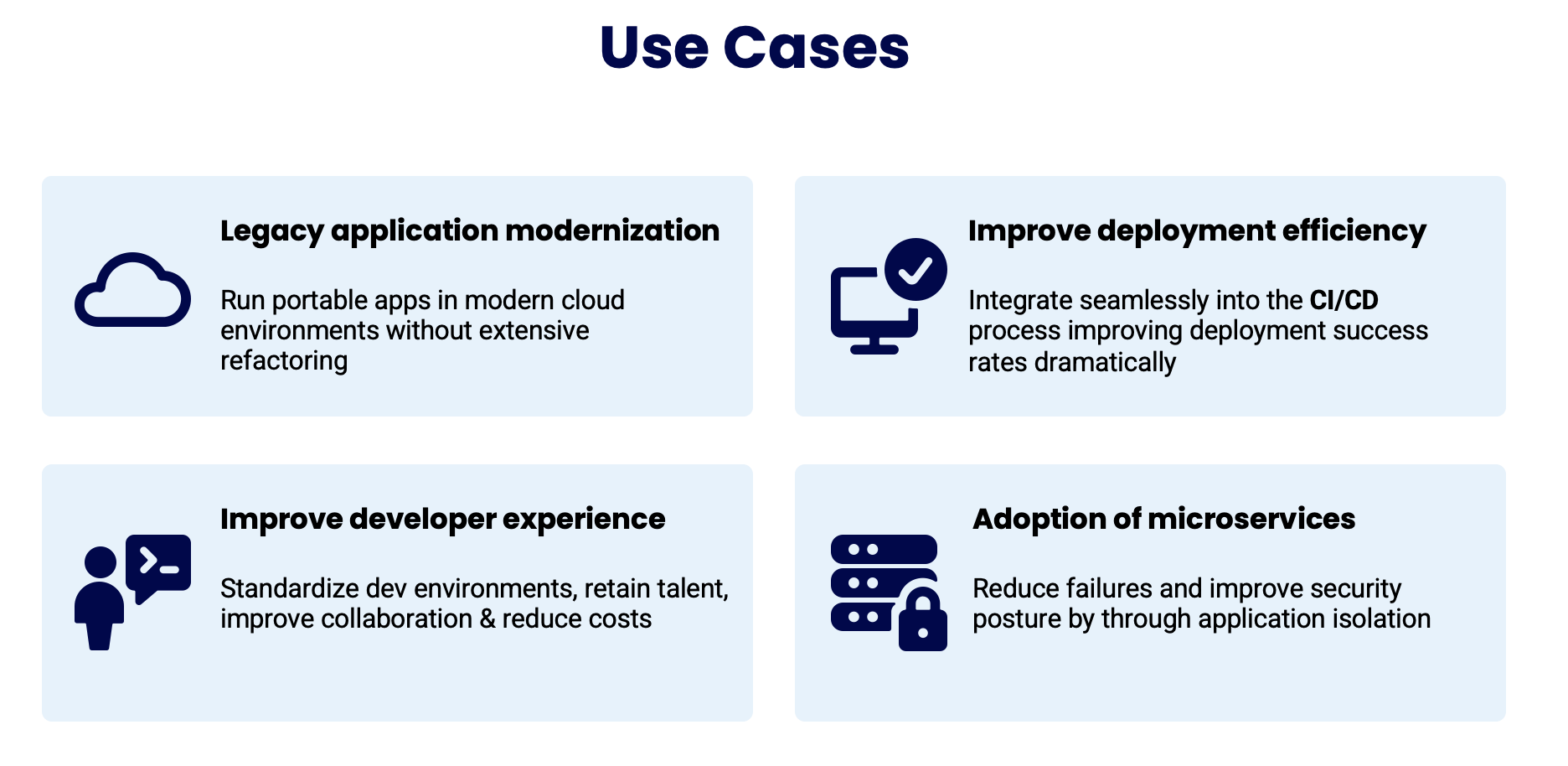
Docker Suite Accelerates Enterprise Innovation
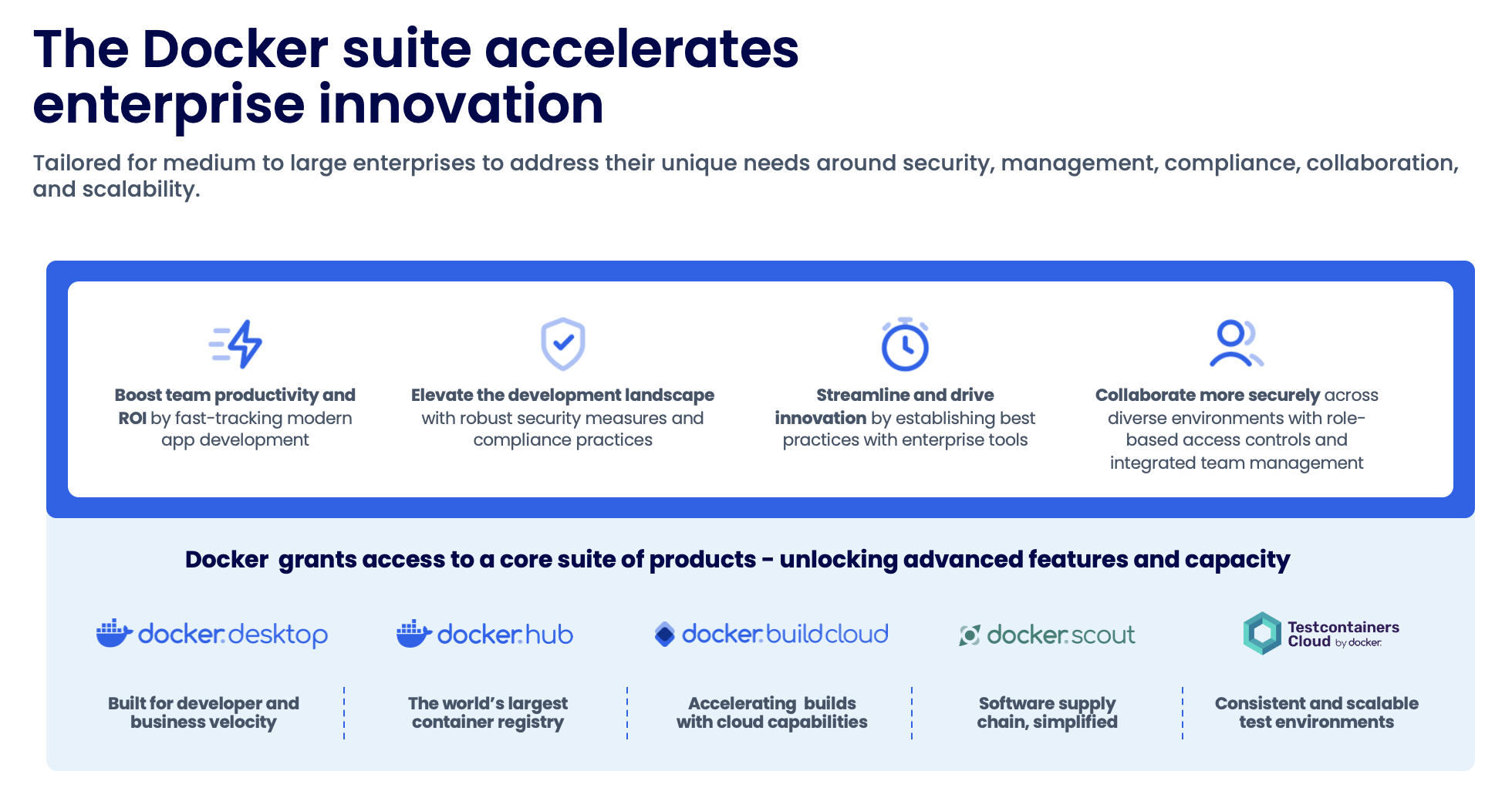
SDLC Breakdown
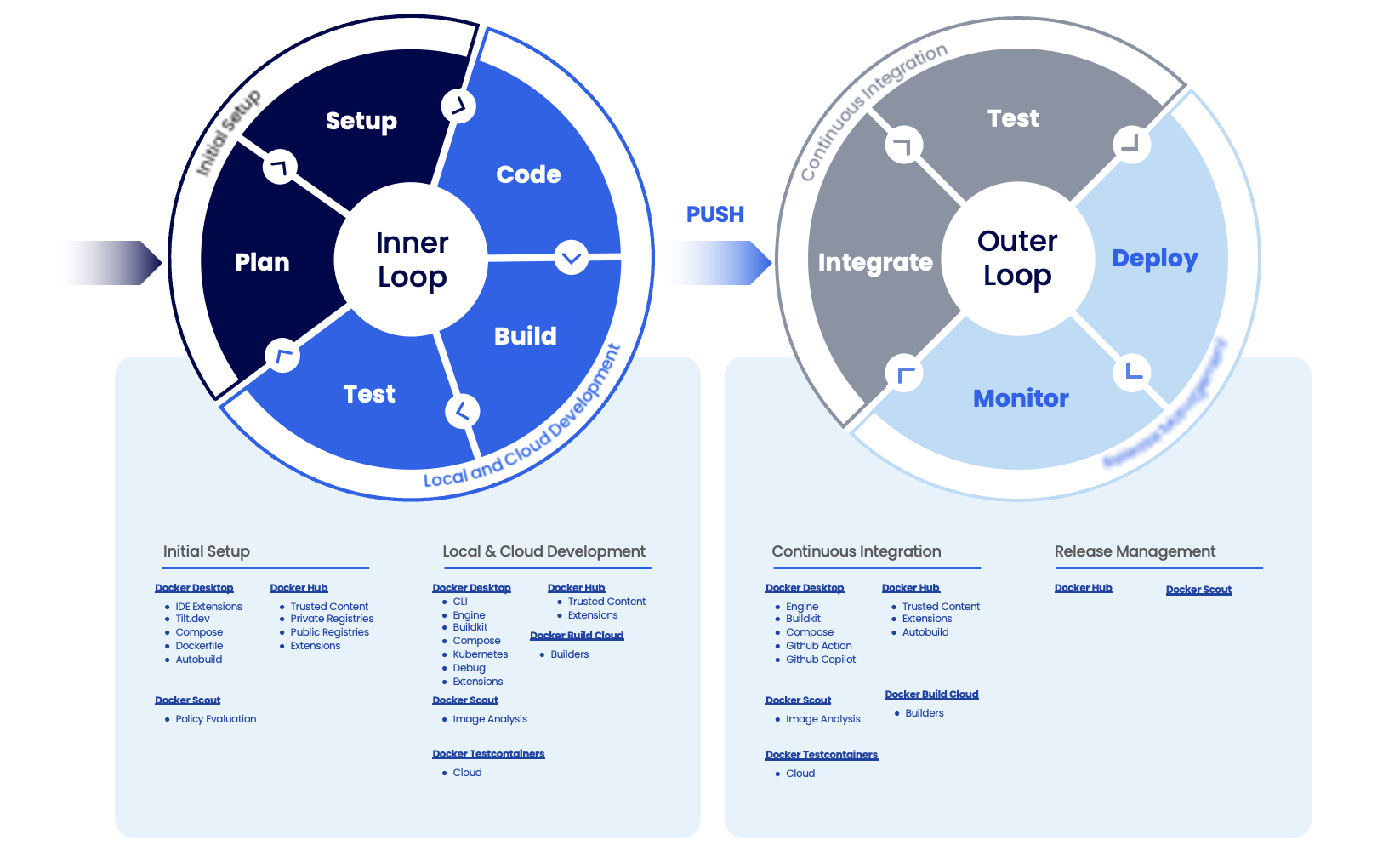
Additional Functionality in Docker Business
